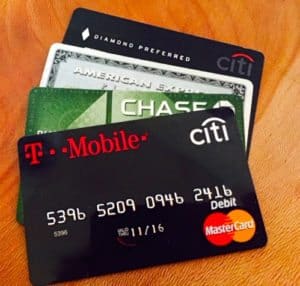Originally posted on CrowdfundInsider
I just returned from the Prosper Show in Salt Lake City, Utah, which is a two-day continuing education event for more than 700 Amazon sellers, focused primarily on education, rather than sales. Using moderated panels of competitors, the event is focused on key business practices that sellers must master in order to be successful, including business financing.
 Amazon has become a household name for online shopping. The Amazon Marketplace, which allows third-party sellers to market their wares, has motivated scores of entrepreneurs to start their own businesses and provides an additional sales outlet for existing retailers and manufacturers.
Amazon has become a household name for online shopping. The Amazon Marketplace, which allows third-party sellers to market their wares, has motivated scores of entrepreneurs to start their own businesses and provides an additional sales outlet for existing retailers and manufacturers.
Amazon has become an important sales channel for small business and the empowerment of entrepreneurs. But Amazon is a highly competitive, efficient ecosystem that requires sellers to be focused, disciplined and, at the same time, flexible. Of course, money management plays a vital role in the equation and it is a variable that can drive success – or failure.
As Amazon sellers continue to expand their existing operations by joining the Marketplace, inventory must be purchased with growing consistency. The sellers’ circumstances will determine whether they can fund this inventory on their own or whether they should seek out some form of financing. After numerous conversations at Prosper Show about seller circumstances, I sat down with Jason Fleming, Sales Manager at my company, to gain a better understanding on financing needs that arise with Amazon sellers and their options for each scenario.
Scenario 1: Brand new seller with no sales or company credit history.
 Startups often have few options for securing business loans, and online sellers are no different. “New sellers are likely to be limited to cash savings on hand and whatever their open availability happens to be on personal credit cards,” Fleming suggests.
Startups often have few options for securing business loans, and online sellers are no different. “New sellers are likely to be limited to cash savings on hand and whatever their open availability happens to be on personal credit cards,” Fleming suggests.
- Pros: The cost of capital for savings is free, and credit cards may be relatively inexpensive, allow you to earn rewards points, and provide the seller an opportunity to build business and personal credit.
- Cons: You will start with a relatively limited amount of capital to work with, and access to capital is unlikely to grow as quickly as the potential inventory needs of your business. Finally, piling on credit card debt could hurt your personal credit score, making it more difficult to pursue larger financing down the road.
- Tip: Pay your full amount back as you sell your inventory. This can help you to build a strong repayment history if you decide to seek business financing in future months.
Scenario 2: A seller with two years of experience that has had good growth, is profitable and looking to expand its inventory.
Amazon sellers in this category will have more options ranging from daily debit loans/merchant cash advances (MCAs), revolving lines of credit (LOCs), and marketplace loans from online lenders. On some occasions, businesses in this category may qualify for an SBA loan with a traditional bank.
- Daily ACH/MCA
- Pros: Daily debit loans are available in minutes and for a wide spectrum of credit risks.
- Cons: The cost of funds often exceeds the seller’s margin. As Jason explains, “If you sell $1 of inventory for $1.25 but it costs you $0.30 to finance the inventory, you’ve lost money on the deal.” In addition, daily debit/MCAs are non-revolving credit, so if you need to finance more inventory just one month after taking an advance, you may have to “stack” or take another loan before paying off the first. It is easy to take on more debt than you can afford quickly and without realizing it.
- Amazon Financing

- Pros: Amazon offers to finance some sellers at very low rates, often maxing out at 12% APR. These rates are likely the lowest available to an early-stage seller and come in meaningfully large amounts.
- Cons: Only select sellers are chosen by Amazon for financing. You aren’t able to apply. “And, these are one-time infusions of cash with no guarantee of future availability,” explains Fleming. “If you depend on this financing, but then grow your business markedly and have to buy another large inventory shipment, you may not have the ability to get more cash.”
- Revolving Lines of Credit
- Pros: Most revolving lines of credit offer cost-effective rates (ranging from conventional bank rates of 4-8% APR, to credit card rates of 9.99%-29.99% APR) which should leave plenty of margin after the inventory sale. Revolving credit also allows you to pay down your balances as the inventory turns and to re-borrow for continuous access to capital. You can take money on an as-needed basis and pay interest only on what you owe. This is one of the largest benefits of taking a line of credit.
- Cons: It is difficult to qualify for a line of credit with traditional lenders, and lines are not appropriate for long-term expansionary investments (i.e. equipment, additional locations, leasehold improvements, etc). Lines can be costly with certain online lenders which can eat away at margins. Jason adds, “And like MCAs, many of these online lenders don’t offer an annual interest rate, so it’s tough to tell what you are paying for your financing.”
- Tip: When seeking a line of credit from an online lender, ask them to share the APR equivalent, to help you understand the true cost of your line of credit.
- Marketplace Term Loans
- Pros: Online term loans can be quite cost-effective. “If the inventory turns slowly (maybe you are launching a new line that you feel confident about but it doesn’t fly off the shelves),” Fleming suggests, “the long-term payment structure means you can comfortably make the payments.” This can be an effective way to finance inventory if you are disciplined about retiring debt with earnings.
- Cons: You run into the same issue of non-revolving credit here as you do with MCAs and Amazon financing. The irony is that the better your inventory sells, the faster you need to access more capital to keep the momentum. However, with a marketplace term loan, that would require applying for another loan, paying another origination fee, and potentially going through another underwriting process that could cause delay and lost opportunities. Also, if you use term financing largely or exclusively for inventory and do not pay back the loan as the inventory converts to cash, additional term loans will add leverage to the business. Most marketplace lenders also have rules on how quickly an existing customer can access more financing.
- Tip: Apply for a term loan to refinance other high-cost financing you may have taken early on, but then also apply for a line of credit for your ongoing inventory needs.
Conventional or SBA financing may be possible but it is likely to be difficult without substantial outside collateral (banks are often hesitant to lend to young businesses or to eCommerce businesses). In addition, it could take up to 6 months to get approved and funded.
Scenario 3: A seller looking to purchase extra inventory just before its peak selling season, during which time profit margins are significantly higher.
 Short-term needs like these should typically be undertaken with short-term financing and the options will include daily ACH/MCA, marketplace term loans, and revolving LOCs from online lenders.
Short-term needs like these should typically be undertaken with short-term financing and the options will include daily ACH/MCA, marketplace term loans, and revolving LOCs from online lenders.
- Daily ACH/MCA
- Pros: As mentioned previously, funds are quickly available for last-minute inventory purchases, and significant margin should make the cost of funds relatively palatable.
- Cons: Underwriting for MCAs is often driven by recent behavior in company bank statements and merchant accounts, which could limit the amount of funding available. And because you have to pay the full interest on an MCA whether you pay the loan off early or not, there is little incentive to pay early, creating a tendency to stack.
- Marketplace Term Loans and Revolving LOCs
- Pros: The rates are typically much lower than an MCA. All things being equal, a company financing inventory through a marketplace lender will enjoy higher net margins. Online marketplace lenders also look at the borrower’s historical financial performance, not just the most recent 3-6 month period. This often allows borrowers with demonstrated seasonality in sales to have more funding made available than through a traditional bank with more stringent underwriting processes. Also, some lines of credit also offer an interest-only period which gives sellers additional time to sell their products.
- Cons: It is more difficult to qualify for a marketplace loan or credit line than an MCA. Without some planning, funds might not be available as quickly as you need.
- Tip: To maximize margin during heavy selling seasons, plan in advance and secure a line of credit or term loan 90 days before you need to purchase inventory for your peak.
 Scenario 4: A struggling Amazon business barely able to repurchase inventory and make payroll.
Scenario 4: A struggling Amazon business barely able to repurchase inventory and make payroll.
When this problem occurs, the Amazon seller has one of two problems, either a “business” problem or a “financial” problem.
- Business Problem: A seller runs into a business problem when they begin selling the wrong kinds of inventory (soft demand), purchasing inventory at too high a price, or selling at too low a price (thin or negative margins) – a common issue in the competitive Amazon Marketplace. These problems often cannot be solved with a loan product. If this is your situation, you should focus on margin improvement, even if it means selling less to earn more. “It’s not what you bring in that’s important, it’s what’s left over after you pay your bills,” adds Jason.
- Financial Problem: Financing inventory with high-cost debt eats away at your margins. Not retiring debt used for inventory as that inventory converts to cash leads to high debt balances and businesses with more debt than they can afford, as well as stacking of loan products. Often the best course of action is to cut costs, retire debt, and stop financing inventory with high-cost debt if it’s going to eat away at the profit margins. Don’t take on debt to finance a transaction that will ultimately cost you money.
Scenario 5: A thriving veteran Amazon business selling more than $10 million per year.
The financing options open up quite a bit for sellers in this category. Possibilities include daily ACH/MCA, marketplace term loans, and revolving LOCs (from either online lenders or traditional banks). Conventional financing can sometimes still be elusive without a brick and mortar storefront as banks fear lending to eCommerce businesses that they believe could fold up overnight without a trace.
All the other pros and cons listed above also apply to a business like this. By the time you, as an Amazon seller, are this successful and established, you likely can finance inventory out of your own cash flow. It might be time to explore financing that will allow you to build your own fulfillment capabilities (warehousing, logistics, etc) or to sell through your own web presence. The greater control that you have over your sales, marketing, and supply chain, the better margins you will enjoy. Remember, Amazon takes upwards of a 30% cut for fulfillment and listing services. As long as you rely on Amazon to fulfill orders and list your products, there is a cap on your revenue.
 There are a number of mistakes small business owners make when taking financing for their inventory needs, but two rise to the top.
There are a number of mistakes small business owners make when taking financing for their inventory needs, but two rise to the top.
- Leverage, leverage, leverage (also called stacking)
- When companies do not retire the debt used to finance inventory as the inventory converts to cash, but rather still seek additional debt for future purchases, the company finds itself stacking, or over-leveraging — placing a higher debt burden on the business than it can afford.
- Poor margin management
- Jason warns, “I often see thin or negative margins as a result of financing inventory with high-cost debt, or even using relatively low-cost financing if you’re already in a thin margin industry.”
- Be careful not to use financing to purchase inventory that you are not adequately prepared to market, price, and sell.
- You may venture away from what you are good at selling and into inventory that eventually is sold at a loss or may take a very long time to turn
With proper planning and some research under your belt, you should be able to grow your business in a sustainable and profitable manner. Proper debt management will help you build your business credit, enabling better rates on financing as your company and your capital needs grow. Amazon is a wide open frontier and now is the time to grab the bull by the horns and make it work for you.
About Dealstruck
Dealstruck an online direct lender that creates customized loans for business. Dealstruck is the first online lender to offer multiple products — including flexible term loans and multiple lines of credit solutions — to small- and medium-sized business (SMB) owners. With a mission to provide growing SMBs with access to capital that is unique, appropriate and affordable with honesty and transparency, Dealstruck is committed to placing SMBs on a credible path to bankability.

